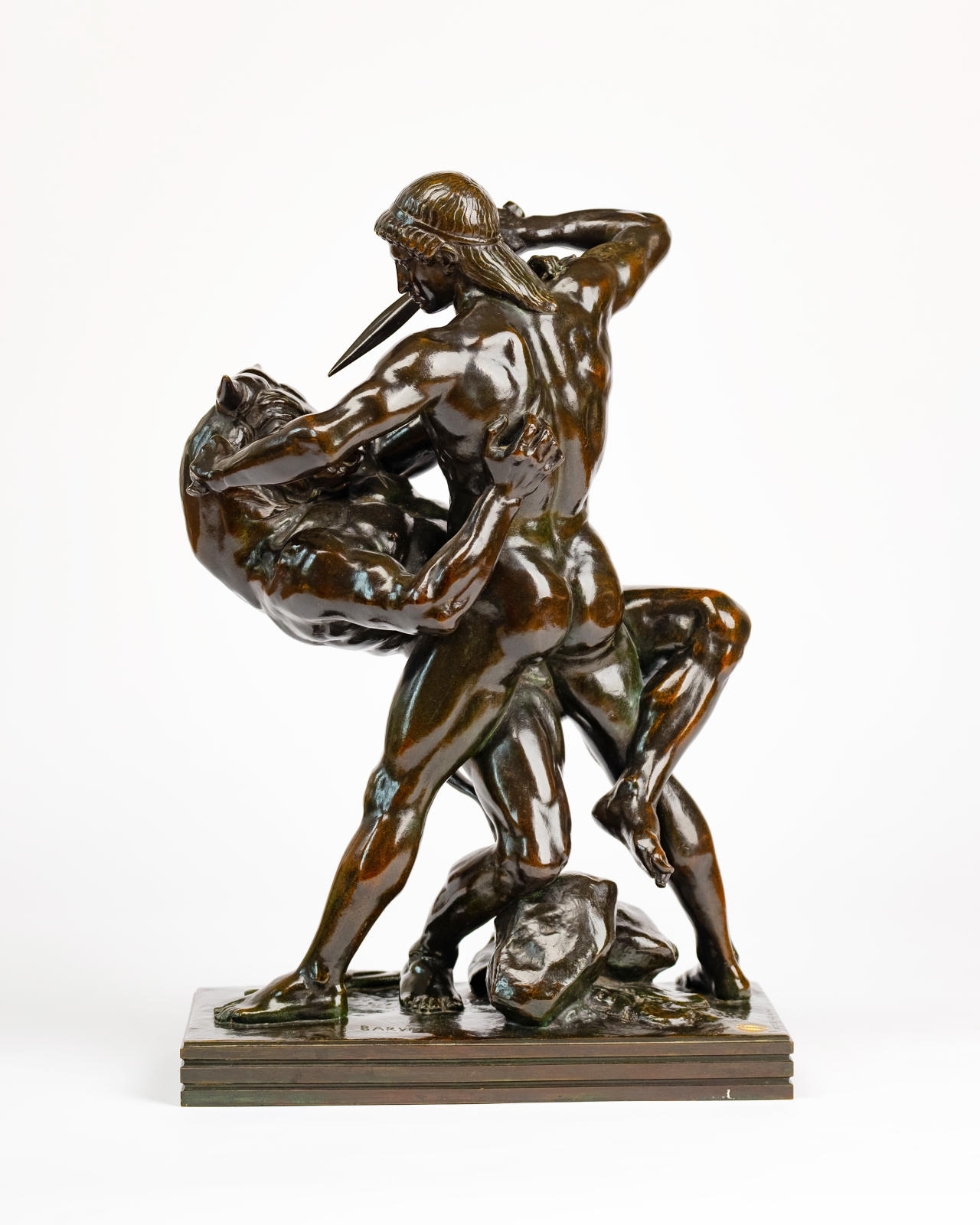



artist
Antoine-Louis Barye is considered the “Father of the French Animalier School” that became popular in the middle of the nineteenth century. The Animalier movement was notable for its realistic and naturalistic portrayal of animals. Barye addressed themes such as wild animals in dramatic action pitted against each other in the struggle for survival. He was also instrumental in foundry practices and placed a great deal of energy and passion into the fabrication of his bronzes. Barye was extremely influential to generations of European and American sculptors. He received many commissions. He also executed many public works and monuments around France. His works are represented in the great museums throughout the world, with large collections in American institutions such as the Metropolitan Museum of Art, N.Y.; the Brooklyn Museum; the Walters Art Museum, Baltimore; the Baltimore Museum of Art; and the Corcoran Gallery of Art, Washington D.C.
Barye’s chief patron from the 1860’s on was W.T. Walters of Baltimore, whose collection is now the Walters Art Gallery, and who saw to it that Barye produced 120 works for the Corcoran Gallery in Washington the year before Barye died. Other American collectors were Cyrus J. Lawrence, James F. Sutton, Samuel P. Avery, Richard M. Hunt, George A. Lucas and Theodore Roosevelt. These nineteenth-century enthusiasts and their heirs so enriched our American public collections that they now hold more works of Barye than any other sculptor.
provenance
Private collection, NJ. until 2023



